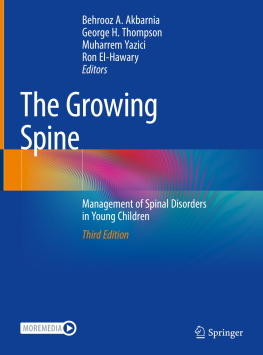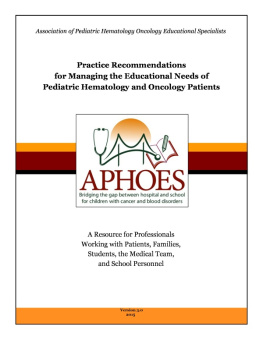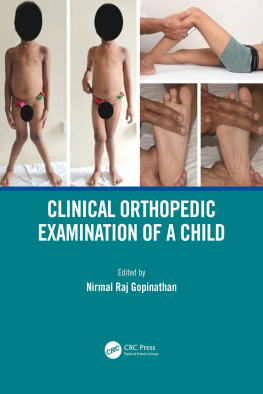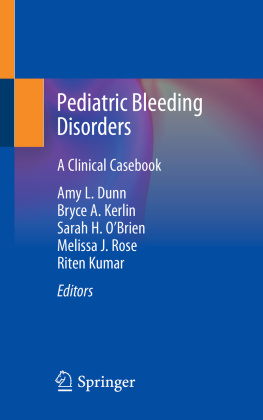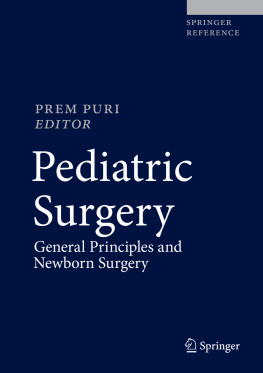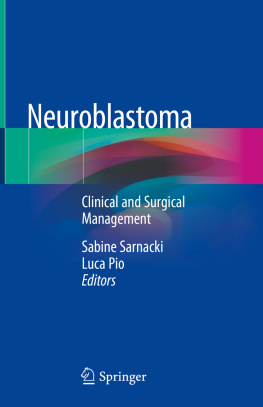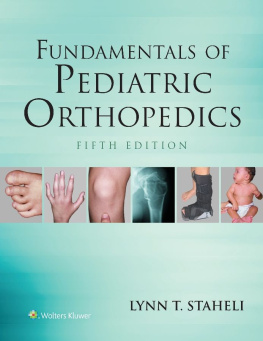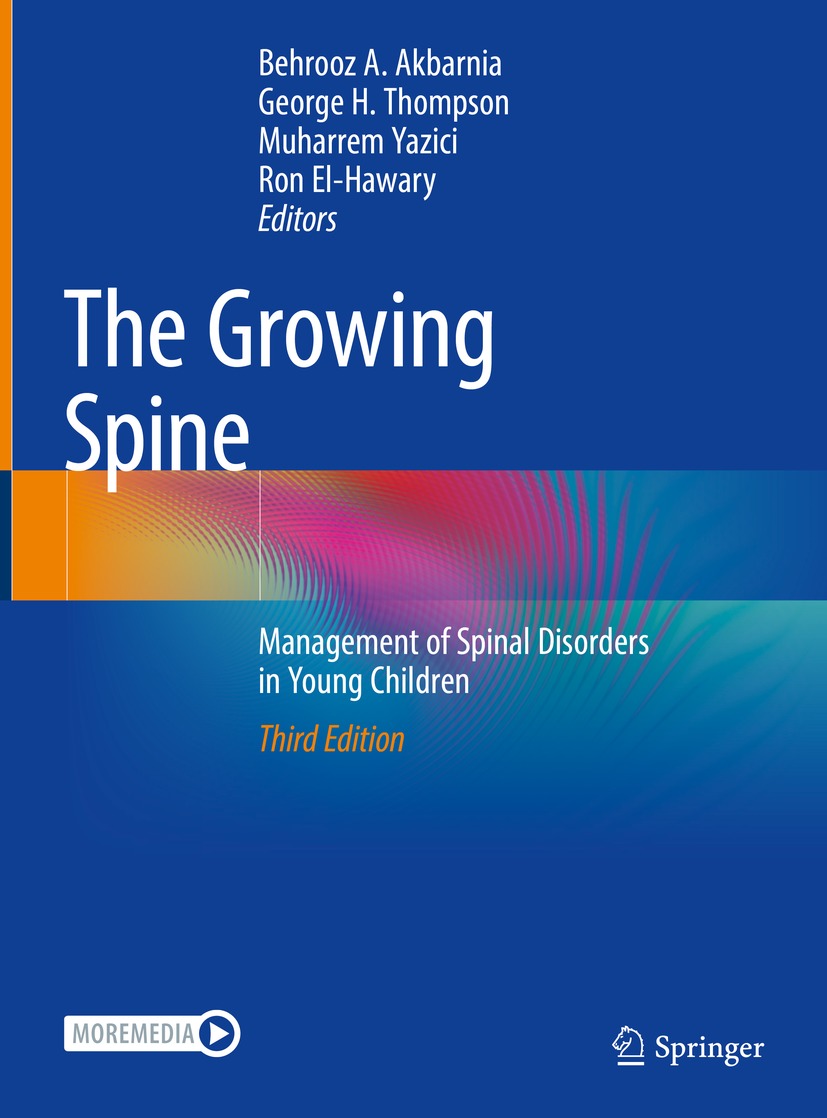Editors
Behrooz A. Akbarnia , George H. Thompson , Muharrem Yazici and Ron El-Hawary
The Growing Spine
Management of Spinal Disorders in Young Children
3rd ed. 2022

Logo of the publisher
Editors
Behrooz A. Akbarnia
Department of Orthopaedic Surgery, University of California, San Diego, San Diego, CA, USA
George H. Thompson
Rainbow Babies & Childrens Hospital, Case Western Reserve University, Cleveland, OH, USA
Muharrem Yazici
Department of Orthopedics and Traumatology, Hacettepe University Faculty of Medicine, Sihhiye, Ankara, Turkey
Ron El-Hawary
IWK Health Center, Dalhousie University, Halifax, NS, Canada
ISBN 978-3-030-84392-2 e-ISBN 978-3-030-84393-9
https://doi.org/10.1007/978-3-030-84393-9
Springer Nature Switzerland AG 2010, 2016, 2022
This work is subject to copyright. All rights are reserved by the Publisher, whether the whole or part of the material is concerned, specifically the rights of translation, reprinting, reuse of illustrations, recitation, broadcasting, reproduction on microfilms or in any other physical way, and transmission or information storage and retrieval, electronic adaptation, computer software, or by similar or dissimilar methodology now known or hereafter developed.
The use of general descriptive names, registered names, trademarks, service marks, etc. in this publication does not imply, even in the absence of a specific statement, that such names are exempt from the relevant protective laws and regulations and therefore free for general use.
The publisher, the authors and the editors are safe to assume that the advice and information in this book are believed to be true and accurate at the date of publication. Neither the publisher nor the authors or the editors give a warranty, expressed or implied, with respect to the material contained herein or for any errors or omissions that may have been made. The publisher remains neutral with regard to jurisdictional claims in published maps and institutional affiliations.
This Springer imprint is published by the registered company Springer Nature Switzerland AG
The registered company address is: Gewerbestrasse 11, 6330 Cham, Switzerland
As with our first and second editions, the driving force behind the third edition ofThe Growing Spine: Management of Spinal Disorders in Young Children is our patients and their families. This textbook would mean nothing without their need for our care and expertise. We therefore dedicate it to them for their trust and participation. And also for giving us the opportunity to learn from experience and to share the knowledge we have gained with others. It is our sincere hope that this textbook will continue to inspire those who care for young children with early-onset scoliosis and other spinal disorders, leading to better outcomes and improved quality of life.
Much has changed in the management of spinal disorders in young children over the past 5 years, and we believe this third edition of our textbook reflects our better understanding of the issues and advances in the field. We owe a great deal of gratitude to the many surgeons and researchers who helped us reach this level of understanding, including our specialty societies: the Scoliosis Research Society (SRS), the Pediatric Orthopaedic Society of North America (POSNA), the European Pediatric Orthopaedic Society (EPOS), and the American Academy of Orthopaedic Surgeons (AAOS). These organizations endorsed the International Congress on Early Onset Scoliosis (ICEOS) annual meeting, supporting both the educational effort during their meetings and the formation of a task force for pediatric devices where their collaboration with regulatory agencies and the industry has enabled an environment for innovation and change. The ability to bring diverse groups together to achieve the common goal of improving our patients quality of life has led to an enriching experience, one which we have attempted to share throughout this textbook.
Many thanks to our colleagues in North America and around the world, who are members of the Pediatric Spine Study Group (PSSG), formed recently by the merger of two legendary study groupsthe Growing Spine Study Group (GSSG) and the Childrens Spine Study Group (CSSG)as well as to the faculty and participants of ICEOS now in its 15th year. Also, to the Pediatric Spine Foundation for supporting the PSSG and ICEOS. This has created an environment, infrastructure, and a forum to address issues surrounding young children with spinal disorders, thereby advancing the research and knowledge in this field. Thanks also to the related specialties showing increased interest and participation in teaching at ICEOS, including pulmonology, cardiology, anesthesiology, radiology, genetics, nursing, and others.
This textbook would not be in your hands without our dedicated, global experts contributing authors. We are grateful to them for their contributions and for their invaluable efforts to prepare excellent chapters and to respond to multiple queries in a timely manner.
And now, most importantly, a special note from each of us to our respective families:
Behrooz A. Akbarnia, MD: Since this is my final participation as an editor of this book, I would like to specifically thank my good friends George, Muharrem, and Ron for their contributions and great teamwork throughout this endeavor. My experience working with them has been one of the highlights of my professional career and one that I will cherish forever.
My deepest gratitude remains, as always, for Nasrin, my wife of 54 years, for her continuing support, love, and encouragement throughout the completion of this third edition. I also cannot forget the influence of my late parents, both of whom were true educators and my role models. They always supported me in pursuing my educational goals even though it meant I had to move away from them. Thanks to my three children and my son-in-lawHalleh, Ladan Ramin, and Stuas well for their support and love. Last but not least, to my five wonderful grandchildrenSimia, Kian, Leila, Luca, and Milathe last born after the publication of the second edition. They have always been a source of inspiration and energy for me to continue the work on this textbook and other academic activities, despite the time it took me away from them.
Muharrem Yazici, MD: I would first like to express my gratitude to my parents, Ayyildiz and Zekeriya, for teaching me that the greatest virtue in life is earning through production. However, the greatest thanks has to go to my family Ruya, Yildiz Naz, and Mehmed Emir. I have stolen time from them, and although I have, on more than one occasion, chosen academia over personal life, they have never once complained and always provided their love and support for me.
George H. Thompson, MD: As with the first two editions, my thanks and appreciation must go to my wife of 54 years, Janice, for her support and encouragement while completing the third edition. She and our children Brian, Scott, Kathryn, and Bradley and our seven grandchildren were deprived of my attention during the editing of this edition. They never complained as they understood the importance of completing this project due to the improved care for others that it will provide in the future.

